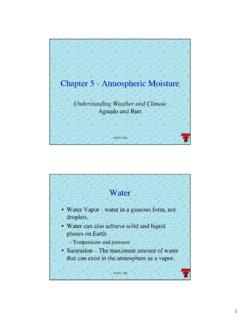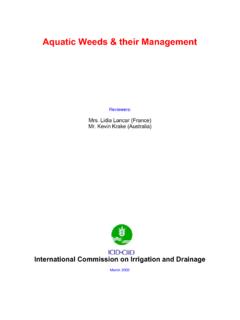Transcription of The Impact of Hands-On-Approach on Student Academic ...
1 Higher Education Studies; Vol. 5, No. 6; 2015 ISSN 1925-4741 E-ISSN 1925-475X Published by Canadian Center of Science and Education 47 The Impact of Hands-On-Approach on Student Academic Performance in Basic Science and Mathematics Cecilia O. Ekwueme1, Esther E. Ekon1 & Dorothy C. Ezenwa-Nebife2 1 Dept. of Science Education, Faculty of Education, University of Calabar, Calabar, Nigeria 2 Federal Government Girls College, Calabar, Nigeria Correspondence: Dr (Mrs) Cecilia O. Ekwueme, Dept. of Science Education, Faculty of Education, University of Calabar, Calabar, UNICAL 3651, 540001, Nigeria. Tel: 234-803-724-1049. E-mail: Received: September 20, 2015 Accepted: October 29, 2015 Online Published: November 16, 2015 URL: Abstract Children can learn mathematics and sciences effectively even before being exposed to formal school curriculum if basic Mathematics and Sciences concepts are communicated to them early using activity oriented (Hands-on) method of teaching.
2 Mathematics and Science are practical and activity oriented and can best be learnt through inquiry (Okebukola in Mandor, 2002) and through intelligent manipulation of objects and symbols (Ekwueme, 2007). The study tries to ascertain the Impact of Hands-On-Approach on the students Academic performance and the students opinion about this activity-based methodology. The general objective is to assess the Impact and provide another platform for students to display their understanding of what they have learnt other than the usual written tests with memorized formulae. The activity focuses on Mensuration and Geometry (with 25% questions in each area) and separation of mixtures (pure and impure substances).
3 This paper includes the analysis of the feedback of the pre-test and post-test scores of the students before and after the Hands-On-Approach was given as well as students interview responses. The study showed positive improvement on both the students performance and participation on mathematics and basic science activities and willingness on the part of the teachers to use Hands-On-Approach in communicating mathematical and scientific concepts to their students. Keywords: Hands-On-Approach , Academic performance, scientific and mathematical concepts 1. Introduction Hands-On-Approach is a method of instruction where students are guided to gain knowledge by experience. This means giving the students the opportunity to manipulate the objects they are studying, for instance, plants, insects, rocks, water magnetic field, scientific instruments, calculators, rulers, mathematical set, and shapes.
4 In fact, it is a process of doing mathematics and science where students become active participants in the classroom. Haury and Rillero (2015) posit that hands-on learning approach involves the child in a total learning experience which enhances the child s ability to think critically. It is obvious therefore, that any teaching strategy that is skilled towards this direction can be seen as an activity-oriented teaching method ( Hands-On-Approach ). Hands-On-Approach has been proposed as a means to increase students Academic achievement and understanding of scientific concepts by manipulating objects which may make abstract knowledge more concrete and clearer. Through Hands-On-Approach , students are able to engage in real life illustrations and observe the effects of changes in different variables.
5 It offers concrete illustrations of concepts. This method learner-centered which allows the learner to see, touch and manipulate objects while learning as mathematics are more of seeing and doing than hearing; so also with science that advocates do it yourself . Obanya (2012) in his convocation lecture confirmed the above statement by adding that the average retention rate of learning by lecture is 5% while that of practice by doing (Activity-oriented) is about 75%. It can be seen that retention rate increases progressively with the use of more interactive and activity-oriented teaching methods. On the contrary, Ekwueme and Meremikwu (2010) observed in their study that some teachers object to the use of interactive activity-oriented method stating that it is time consuming and do not permit total coverage of the syllabus.
6 Fortunately, the new mathematics and basic science syllabus coverage is determined by how much skills/knowledge students have acquired rather than how much of the syllabus is covered as learner centeredness is highly advocated Obanya (2012) in his convocation lecture confirmed the above statement by Higher Education Studies Vol. 5, No. 6; 2015 48 adding that the average retention rate of learning by lecture is 5% while that of practice by doing (Activity- oriented) is about 75%. It can be seen that retention rate increases progressively with the use of more interactive and activity-oriented teaching methods (NERDC, 2008). Past research work had stated from their findings that one of the major causes of students failure in Mathematics and Basic science is lack of good teaching methods (Mandor, 2002; Ezema, 2004; Ekon, 2013).
7 This study therefore, focuses on the possible Impact of Hands-On-Approach on students Academic performance in mensuration, geometry, and separation of mixtures in Junior Secondary School Three (JSSIII). 2. Statement of the Problem Mathematics and Science learning as the bedrock of any civilization is expected to produce individuals that are capable of solving their problems as well as those of the society. Such an individual is expected to be autonomous, confident and self-reliant after his graduation from school. In recent times, applicability of what one learns in school to real life situation is very low. West African Examination Council (2007-2012) reports also indicated that most students performance in mathematics and science in Senior School Certificate Examination (SSCE) are very low and so many factors are responsible for this poor performance, of which lack of good teaching method that involves students active participation is lacking.
8 3. Purpose of the Study The purpose of this study is to deliberately expose the students to a designed programme that ensures their classroom participation to about 90% of the entire classroom activity. The effect of this programmed instruction on their Mathematics and Basic science achievement is then measured and interpreted as the potential effect of their classroom involvement in the learning of those Mathematics and Basic science concepts. 4. Research Questions 1). Is there any significant difference in performance of students in the pre-test and post-test scores? 2). To what extent does performance of girls differ from that of the boys in the Mathematics and Basic Science task? 3). What is the frequency of the response of the students to the use of activity-oriented method in learning Mathematics and Basic Science?
9 5. Materials and Method The main research design used for this study is quasi-experimental research design where the students were practically drilled on the Mathematics and Basic Science task. Questionnaire items and interview were also used to get their responses on the Hands-On-Approach used. The study was carried out in a unity school and one government school in Calabar municipality of Cross River State. The population of the students consists of all the junior secondary three students at the two schools used. Their mid-term test scores in mathematics and Basic Science were used to select the top 8, middle 8 and lower 8 scoring students to make up a mixed ability class in each class for the study.
10 Two classes of 30 students each in each school were used. This made a total of one hundred and twenty students comprising high, average and low ability students (sixty for experimental group and sixty for the control group). The selection is as shown in Table 1. Table 1. Participant information for mathematics and basic science Gender School Group Classes Sample Size Boys (%) Girls (%) A JSS 3A 30 20( ) 10( ) A JSS 3B 30 12( ) 18( )















